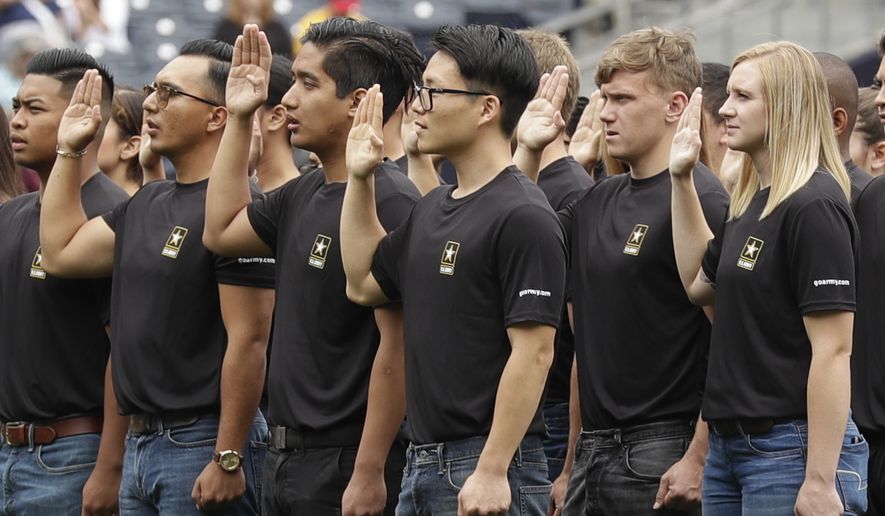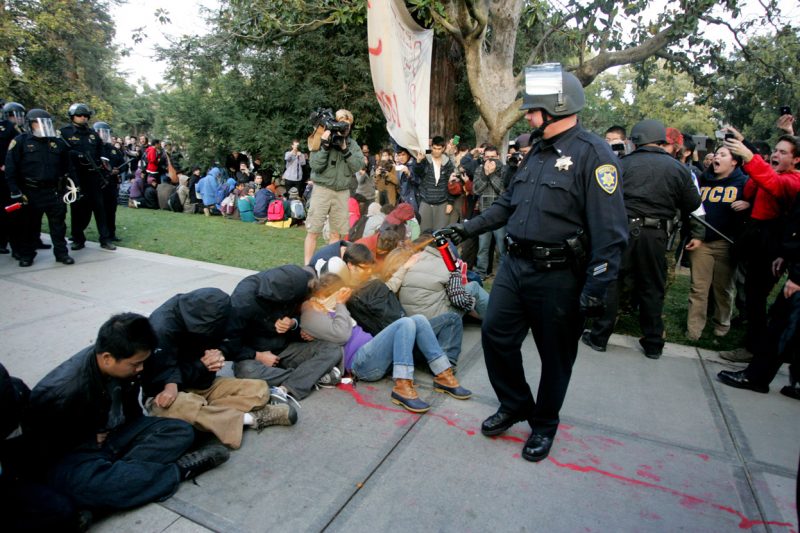Raising Our Children to Die for U.S. Empire

The best way to fix the U.S. armed forces’ recruiting challenges may involve dipping further into the nation’s high schools.
As the Army, Navy and other services contend with a thriving economy and a directive to expand their ranks, there is a growing debate over whether the military should consider lowering the minimum enlistment age from 17 to 16. More than a dozen countries, including the United Kingdom, already have adopted the policy.
Critics say the idea is deeply flawed and presents a host of societal problems, but supporters argue that the Pentagon needs to think outside the box if it wants to continually overcome one of the toughest recruiting environments in decades.
Neither the military nor lawmakers have given any indication that they are entertaining the idea, but some analysts say that opening the ranks to younger Americans could provide unique benefits and may be the kind of fundamental overhaul the recruiting system needs for the 21st century.
“For one, many of the factors that disqualify older youths from joining — like criminal records — are not as present in younger teens,” said Shane McCarthy, chief marketing officer of Sandboxx, a leading technology platform that connects military members stationed abroad with families and friends at home.
Mr. McCarthy also has advised military commands on how to better target recruits.
“Currently, of the 75% of 17- to 24-year-olds who are ineligible to serve, for example, 10% are ineligible due to criminal records,” he wrote in a recent piece for the Military Times. “And, according to the Department of Justice, there are twice as many arrests of 18- to 20-year-olds as there are arrests of 15- to 17-year-olds.”
Mr. McCarthy’s argument touched off a firestorm, with skeptics saying the move could create more problems than it would solve.
Peter Warren Singer, a senior fellow at the Washington think tank New America, countered that lowering the enlistment age to 16 would undermine combat effectiveness and unit cohesion and create other problems.
Mr. Singer, author of the book “Children at War,” also said the very idea shows a “misunderstanding [of] the different brain chemistry of youths and their ability to make informed judgment” and would destroy “the day-to-day lives of the poor drill instructors and commanders of these teens’ first unit.”

He made his case in a piece for the military-focused website Task & Purpose.
Despite those and other concerns, the notion certainly isn’t new. At least 13 nations allow enlistees younger than 17, according to the CIA World Factbook. They include major powers such as the United Kingdom and smaller countries with much less capable militaries, such as Tonga, Bolivia and Papua New Guinea.
In the U.S., analysts say, there is a lack of data about the issue and it’s unclear exactly what effects military services would encounter if they begin admitting younger teens.
“I think the broader answer about all of this is we really don’t know,” said Beth J. Asch, a senior economist at the Rand Corp. who studies military recruiting. “There’s no current research on what the effects would be, how would it expand the market, their qualifications. We don’t know.”
Like other analysts, Ms. Asch said she believes the idea of signing up 16-year-olds has been off the table for decades and remains so today.
But the discussion underscores the armed forces’ systemic recruiting challenges.
Last year, the Army fell short of its recruiting goal for the first time in a decade. The Army had set a goal of 76,500 recruits and pulled in just under 70,000, according to Defense Department figures.
The Army and all other branches of the military expect to meet this year’s targets, but officials readily acknowledge that the recruiting environment is as difficult as ever, largely because of a soaring economy, a consistently low unemployment rate and more economic opportunities in the private sector for young Americans who otherwise might consider military service.

Analysts say that recruiting 16-year-olds doesn’t seem to be the right solution, but they stress that the military can and must improve its outreach to younger teenagers.
“You have to compete and be in the marketplace, and that’s something the military doesn’t do very well,” said Rebecca Burgess, a research fellow at the American Enterprise Institute who studies military and veterans issues. “It tells the story of itself that’s very traditional: ‘We’re freedom fighters doing good throughout the world; be part of our team.’ And it expects people to kind of come to them.”
That, she said, is why recruiting offices too often are found in dying shopping malls or other low-traffic sites rather than out in the community.
The military has taken serious steps in recent years to increase its visibility and engagement in the nation’s communities. The Army has launched a comprehensive recruiting program in major cities and said the approach already has paid huge dividends in the number of recruits from urban centers such as Baltimore and Minneapolis.
But analysts say the military’s past tack of using marketing slogans such as the Army’s “Be all you can be” mantra no longer works.
Instead, they say, the branches should craft multiple appeals centering on the host of benefits that come from military service, including educational assistance, patriotism, career benefits, and the host of jobs a man or woman can perform in the military outside of a combat zone.
“I think what’s happening now — and it’s not that messages aren’t important — but I think there’s a realization that different people are interested in different things,” said Ms. Asch. “It’s not one message. People want to join for a variety of reasons, so the message has to be somewhat tailored.
“The trick is to communicate all of that so people get the message they need to hear,” she said.
By Ben Wolfgang
This article was originally published by “Washington Times”
The 21st Century
